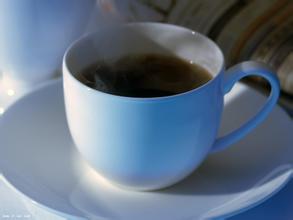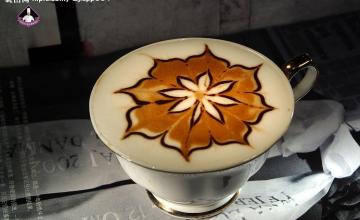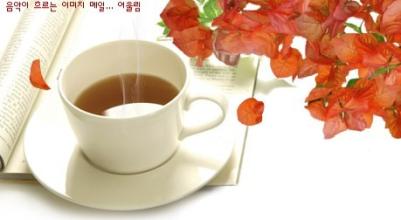Introduction to the varieties with slightly sour taste in the coffee producing area of Cuba's Crystal Mountain Coffee.
In addition to Cuba, it also includes more than 1600 surrounding islands of different sizes. The islands are made up of five islands: Savannah, Camag ü ey, Colorados, Queen's Garden and Canareos. Youth Island (also known as Pine Island), located in Batahuano Bay, is the only larger island along the coast. The total length of the coastline is 6073 kilometers. Most of the island of Cuba is flat, with mountains accounting for only 1x4 of the total area. There are three major mountains in the country: the Guaniganico Mountains, the Eskambria Mountains and the Maestra Mountains (the highest mountain range in Cuba, of which Mount Turchino is 1974 meters above sea level. it is the highest peak in Cuba) there are nickel, cobalt, manganese, chromium, iron and copper with mining value. Among them, nickel reserves are about 6.6 million tons, accounting for 40.27% of the world's total reserves. Manganese reserves are about 7 million tons; Chromium is also rich; Iron ore reserves of about 3.5 billion tons, mainly distributed in the Nippe and Palakoa Mountains, is one of the largest reserves in the world; almost all the mountains of Cuba contain copper deposits; Pine Island contains tungsten deposits and also produces marble the Cuban flag is horizontal rectangular with a length-to-width ratio of 2 ∶ 1. On one side of the flagpole is a red equilateral triangle with a white five-pointed star; the right side of the flag is composed of three blue wide stripes and two white wide stripes parallel and connected. Triangles and stars were originally symbols of Cuba's secret revolutionary organizations, symbolizing freedom, equality, fraternity and the blood of patriots. The five-pointed star also represents that Cuba is an independent people. Three wide blue stripes indicate that the future republic will be divided into eastern, western and central states; the white stripe indicates that the Cuban people, with a pure purpose during the War of Independence, is the highest administrative organ of the country, and the President of the Council of State is also the President. The current Council of Ministers was established in February 2013, with President Raul, first Vice-Chairman Miguel D í az-Canel Bermhost Bernudez (Miguel D í az-Bermhost dez) and Executive Secretary Jos é Ricardo Guerra. The main ministers are: foreign Minister Bruno Rodriguez Parrilla, Revolutionary Armed Forces Minister Leopoldo Fr í as Frias, Minister of Communications Miami Meza Ramos (Maimir Mesa Ramos), Minister of Public Health Roberto Thomas Ojeda (Morales Ojeda), Minister of Foreign Trade and Foreign Investment Rodrigo Malmierca Diaz (Rodrigo Malmierca D í az), Central Bank Governor Ernesto Medina Villaveir á n, etc.
Crystal Mountain Coffee beans are typical island beans with a clean and delicate taste, slightly sour taste, not strong but long-lasting, with sweet fruit aromas. The coffee brewed by it has a rare and perfect taste: it is bitter with aroma and a mellow and smooth taste. It slightly contains wine-like bitterness and a touch of sweetness, and even a hint of tobacco, meticulous and smooth, fresh and elegant. Many flavors are mixed together, and the match is almost perfect.
To brew Crystal Mountain Coffee, it is best to use a hand brew or American coffee maker, the water temperature is below 85 ℃, the match wind cooking method firepower is not too big, the time is not too long. When tasting coffee, because it is mellow, you can put more milk, but less sugar, usually two or three tablespoons (coffee cup spoon) is just right. I believe that its unique taste will leave a deep impression on you: full of particles, uniform taste and tobacco flavor.
Located in the West Indies, the Republic of Cuba has a detached and pristine natural environment, the beautiful Caribbean Sea and the world-famous Crystal Mountain Coffee.
In 1748, coffee was introduced into Cuba from Domiga, and Cuba began to grow coffee ever since. With fertile land, humid climate and abundant Rain Water, Cuba can be called a natural treasure land for coffee cultivation. The suitable natural conditions provide a favorable natural environment for the growth of coffee trees, and coffee is well planted and developed here. In Cuba, the cultivation of coffee is regulated by the state. The best coffee growing area in Cuba is located in the Central Mountains. Because this area not only grows coffee, but also produces quartz, crystal and other precious minerals, it is also known as Crystal Mountain. At present, Crystal Mountain Coffee is synonymous with top Cuban coffee. A prominent feature of Crystal Mountain Coffee is its large granule and bright green color of coffee beans. In Cuba, most of the coffee beans are picked by hand. Coffee beans are picked about every half a month during the ripening period. During or after picking, coffee beans are classified and those immature and bad beans are removed to ensure the quality of the coffee. Cubans usually deal with coffee beans in two ways-tanning and washing. Tanning is the simplest, cheapest and most traditional way to treat coffee, which is to let the coffee fruit dry in the sun but not ferment. The general drying time is about four weeks. The washing rule makes the aroma of the fruit more into the coffee beans, thus adding a coarse fruit aroma to the coffee.
At present, Crystal Mountain Coffee is very precious. This is mainly for two reasons. The first reason is the economic sanctions imposed by the United States against Cuba and the non-opening up of Cuban imports. The second reason is that at present, Cuban coffee beans are mostly acquired by the French and Japanese markets, especially Japan, so it is difficult to buy coffee beans directly from Cuba. In spite of this, the status of Cuban coffee in the hearts of global coffee lovers can still be compared with Jamaica Blue Mountain Coffee.

Important Notice :
前街咖啡 FrontStreet Coffee has moved to new addredd:
FrontStreet Coffee Address: 315,Donghua East Road,GuangZhou
Tel:020 38364473
- Prev

Introduction to the characteristics and taste of Peruvian coffee manor with elegant and mild sour taste
After peaceful negotiations between the two sides in 1929, Peru took back Tacona.
- Next

Introduction to the characteristic flavor and taste varieties of El Salvador coffee manor with fragrant and mild taste
The judicial power of El Salvador is exercised by the Supreme Court, the Procurator-General's Office, etc. The Supreme Court is composed of 15 judges (including the President) and is elected by Parliament. The President of the Supreme Court shall serve for a term of five years and shall be eligible for re-election. Judges are appointed for a term of nine years, with 1/3 re-elected every three years. The Attorney General shall be elected by Parliament for a term of three years and shall be eligible for re-election. President of the Supreme Court, Oscar Armando Pinedanavas.
Related
- Detailed explanation of Jadeite planting Land in Panamanian Jadeite Manor introduction to the grading system of Jadeite competitive bidding, Red bid, Green bid and Rose Summer
- Story of Coffee planting in Brenka region of Costa Rica Stonehenge Manor anaerobic heavy honey treatment of flavor mouth
- What's on the barrel of Blue Mountain Coffee beans?
- Can American coffee also pull flowers? How to use hot American style to pull out a good-looking pattern?
- Can you make a cold extract with coffee beans? What is the right proportion for cold-extracted coffee formula?
- Indonesian PWN Gold Mandrine Coffee Origin Features Flavor How to Chong? Mandolin coffee is American.
- A brief introduction to the flavor characteristics of Brazilian yellow bourbon coffee beans
- What is the effect of different water quality on the flavor of cold-extracted coffee? What kind of water is best for brewing coffee?
- Why do you think of Rose Summer whenever you mention Panamanian coffee?
- Introduction to the characteristics of authentic blue mountain coffee bean producing areas? What is the CIB Coffee Authority in Jamaica?

